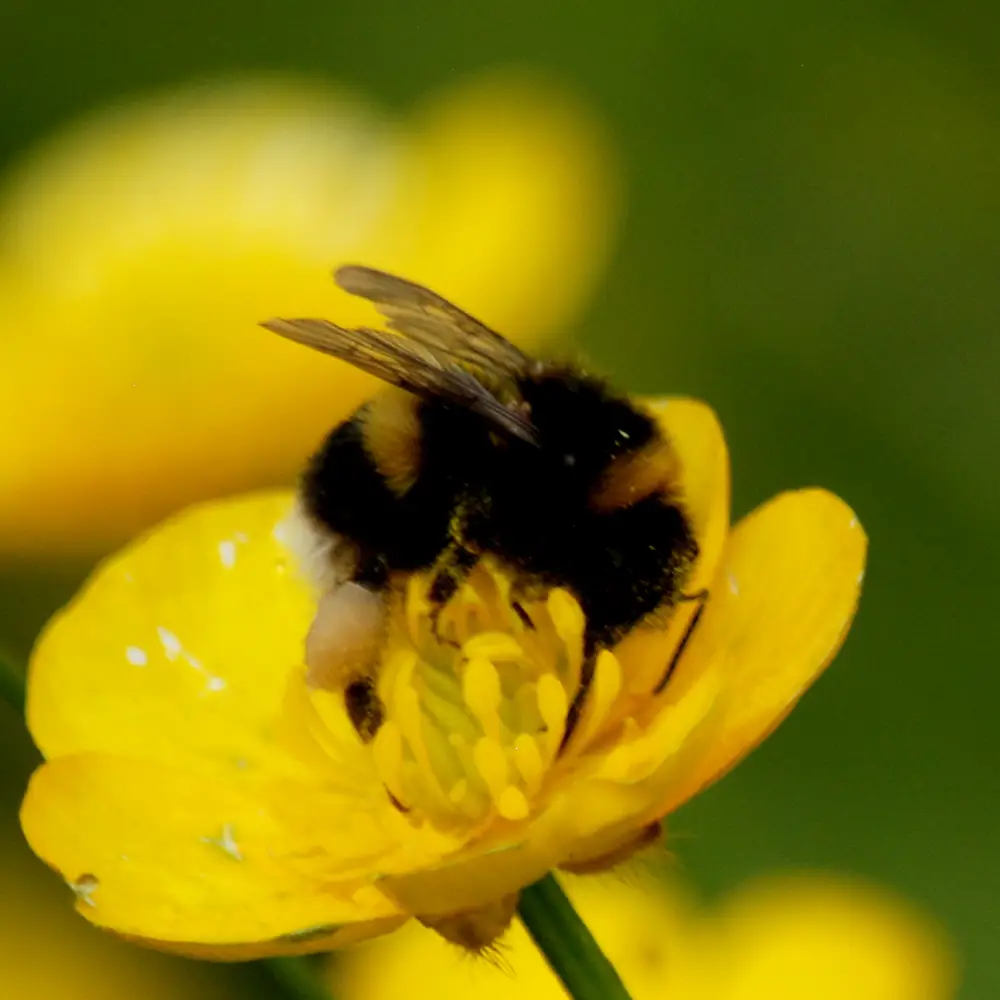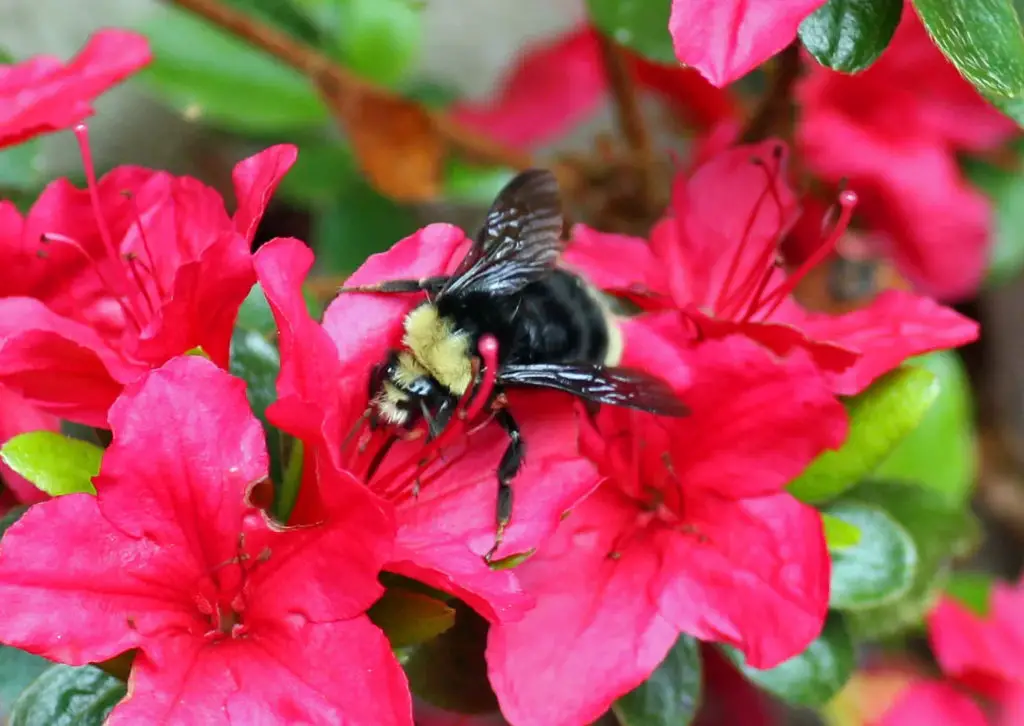Affiliate Disclaimer - As an Amazon Associate I earn from qualifying purchases.
It supports the website. So, Thank you
Bees love flowers, right? Of course, they do; bees use flowers for gathering nectar which they use as food. They’re important pollinators that our ecosystems could not live without. Many people are under the impression that bees aren’t choosy when it comes to flowers but there are some that they might stay away from.
The buttercup is an abundant flower that grows from a perennial weed. These little yellow blooms typically appear on lawns and are seen almost everywhere. While it might be easy to assume they’d be a good source of nectar for bees, this might be a mistake. So, are buttercups good for Bees?
You probably won’t see bees going for buttercups as much as they go for other flowers. There’s a notion that the pollen is toxic and this is true for grazing animals. There is some evidence that bees may also suffer the dangerous effects of this toxic pollen but they never really have enough of it for these effects to show.
In this short guide, we’ll look at whether buttercups are good for bees and what flowers you should consider planting for your hive.
Table of Contents
What Are Buttercups?
Buttercups are largely considered to be a weed and are found all over the Northern hemisphere. What’s amazing is that there are thought to be around 2000 species of these perennial weeds and most of them are native to the USA with just a handful being native to Asia.
Buttercups like cooler climates and can usually be found in moist regions such as meadows, fields, bogs, near roads, and even right there in your backyard.
These weeds produce cup-shaped flowers with five bright yellow petals and can grow anywhere up to 16 inches in height, depending on the species. They will usually begin to bloom in spring between April and May.
Are Buttercups Toxic To Bees?
There has been a lot of concern among beekeepers about the presence of buttercups as they are largely known to contain toxic pollen. These flowers are certainly toxic to grazing animals such as cows, horses, and sheep. However, while they can be fatal for these mammals, the animal would have to eat a significant amount for the effects to be deadly.
Where bees are concerned, most species of buttercup aren’t good for them. But what’s amazing is that it is highly unlikely you would see a bee foraging from these flowers. Bees are hugely intelligent creatures and it almost appears as if they know what’s good for them and what’s not.
But let’s take a closer look at why the humble buttercup is so dangerous. The main reason is the presence of a chemical known as anemonol. This chemical breaks down into a toxin known as protoanemonin and this is what could be fatal to an unsuspecting bee.
What’s important to keep in mind is that this toxin is only present in live buttercups. Once the flower dies, the toxin dies with it. That said, if a bee were to collect pollen from the flower, the toxin may remain active for as long as three years!
Beekeepers should be aware of the severity of bees ingesting this toxic as, when they do, their symptoms will come on almost immediately. Things like twitching of the legs, convulsions, and even paralysis are common for bees that have eaten from a buttercup. What’s most worrying is that, if the bee returns to the hive, these toxins can be introduced, affecting the entire colony. While the condition is officially known as ranunculus poisoning, many people refer to it as May disease or Bettlach disease.
Creeping Buttercups
The good news is that there is one species of buttercup, the ranunculus repens, more commonly known by the name creeping buttercup, that won’t cause any harm to your bees.
While these buttercups do still contain the same toxins as other species, it is only released via the sap, which the bees won’t ever come into contact with. However, these buttercups do still pose a risk to other animals that would eat the entire flower such as the grazing animals we discussed earlier on.
Interestingly, however, creeping buttercup isn’t attractive to all types of bees. It is usually short-tongued bee species that would pollinate this flower whereas long-tongued bees would frequent other plants, like foxgloves.
How To Get Rid Of Buttercups
Knowing that buttercups are harmful to bees, it comes as no surprise that most beekeepers and nature lovers will want to get rid of them. If you’ve ever tried to tackle a weed before, you’ll know that many are very stubborn and buttercups are no exception. They’re known to be particularly stubborn on farmland, especially where woodlands are nearby and the soil is wet. Clay soil can also be problematic.
You can manually remove buttercups using a trowel or fork to dig up the foliage and the roots. After this, you should spread a good amount of mulch over the area to suffocate anything that remains. However, in some cases, this may not be effective and it may be necessary to lift the lawn entirely and re-turf the area.
It’s best to dig out buttercups in the spring as the weed will be more vulnerable but we would also suggest hoeing the ground throughout the summer to disturb any remaining roots. When it comes to the fall, be sure to aerate the lawn as this will improve drainage and make the area less favorable to buttercups in the future.
What Flowers Are Best For Bees?
If you are a beekeeper and want to plant flowers to aid in nectar collection or if you’re simply looking to attract more bees to your backyard then you’re in luck; there are lots of flowers that will do the job.
One of the most important things to remember is that planting native flowers will always yield the best results so make this a priority. However, here is a list of some of the best plants to attract bees that won’t do them any harm.
- Foxgloves
- Hollyhocks
- Crab apple
- Bluebell
- Heather
- Coneflower
- Lavender
- Primrose
- Goldenrod
- Honeysuckle
- Buddleja
- Dahlias
- Wallflowers
- Sunflowers
- Chives
- Geranium
Conclusion
We’re all keen to provide the safest and most nutritious plants and flowers for our bees but there are some that will do more harm than good. While the creeping buttercup is largely considered to be safe for bees, most species contain a toxin that can be fatal.
It is, therefore, best to avoid having buttercups in the vicinity of the hive, where possible. Since they are weeds, they can be difficult to control but it is possible. Moreover, we would suggest planting some of the native flowers featured in this guide that will not only attract bees and other pollinators but are also hugely beneficial to our tiny friends.




